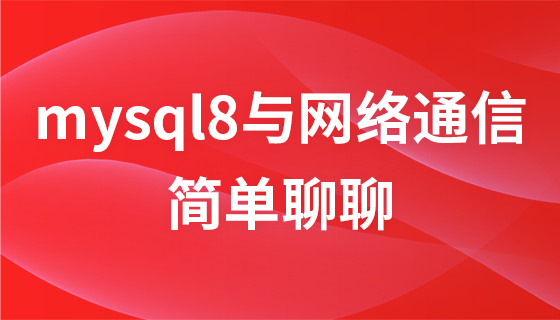Golang 中的json.Marshal问题总结(推荐)
来源:脚本之家
时间:2023-01-12 10:51:09 174浏览 收藏
本篇文章向大家介绍《Golang 中的json.Marshal问题总结(推荐)》,主要包括JSON、Marshal,具有一定的参考价值,需要的朋友可以参考一下。
1.Quiz
有如下一个例子:
package main
import (
"encoding/json"
"fmt"
"time"
)
type RecordBrief struct {
time.Time
ID int
}
func main() {
r := RecordBrief{
Time: time.Now(),
ID: 6,
}
m, _ := json.MarshalIndent(r, "", "\t")
fmt.Println(string(m))
}
你期望的结果是像:
{
"Time": "2022-06-25T10:49:39.597537249+08:00",
"ID": 6
}
还是:
{
"ID": 6
}
或者是别的?
2.Answer
其实如果你认为的答案不是:
"2022-06-25T10:52:23.590933959+08:00"
也没能想明白原因,可以继续往下看看。
3.Resolving
诚然,我们在学习json的序列化和反序列化的时候,目的就是把一个Golang struct值序列化为对应的json string罢了。可能我们还知道一些Marshal的规则,比如struct的字段需要定义为可导出的,比如还可通过定义对应的json tag来修改struct field对应的json字段名称等。
但是对于json.Marshal函数的细节可能大家不会去太在意。本次提出的问题中,我们不难注意到其中的time.Time是一个匿名(Anonymous)字段,而这个就是答案的由来。我们先看看json.Marshal的注释文档中的一个解释:
// ...
// Marshal traverses the value v recursively.
// If an encountered value implements the Marshaler interface
// and is not a nil pointer, Marshal calls its MarshalJSON method
// to produce JSON. If no MarshalJSON method is present but the
// value implements encoding.TextMarshaler instead, Marshal calls
// its MarshalText method and encodes the result as a JSON string.
// ...
func Marshal(v interface{}) ([]byte, error) {
...
}
Marshal函数递归地遍历传入的序列化对象v(及其成员)。当面对一个实现了json.Marshaler接口的对象(不能是一个空指针)时,Marshal函数就会调用该对象的MarshalJSON方法来生成JSON内容。如果没有实现json.Marshaler,而是实现了encoding.TextMarshaler接口,那么就会调用它的MarshalText方法,然后把该方法返回的结果转编为一个JSON字符串。
然后我们再看看time.Time:
type Time struct {
...
}
// MarshalJSON implements the json.Marshaler interface.
// The time is a quoted string in RFC 3339 format, with sub-second precision added if present.
func (t Time) MarshalJSON() ([]byte, error) {
if y := t.Year(); y = 10000 {
// RFC 3339 is clear that years are 4 digits exactly.
// See golang.org/issue/4556#c15 for more discussion.
return nil, errors.New("Time.MarshalJSON: year outside of range [0,9999]")
}
b := make([]byte, 0, len(RFC3339Nano)+2)
b = append(b, '"')
b = t.AppendFormat(b, RFC3339Nano)
b = append(b, '"')
return b, nil
}
所以time.Time是实现了json.Marshaler接口的。然后观察到它的实现是把时间按照RFC3339Nano格式字符串值返回为json序列化结果,这和我们实际上运行程序看到的结果是一致的。
那么再看看我们的type定义:
type RecordBrief struct {
time.Time
ID int
}
为什么ID字段不见了?正是因为匿名字段的原因,Golang中的这种用法有点类似于继承,所以RecordBrief类型也自动具有了time.Time的所有方法,当然也包括了MarshalJSON,从而也就实现了json.Marshaler接口。如此一来,当一个RecordBrief被Marshal的时候,它的序列化结果就被time.Time的序列化结果给覆盖了。
Conclusion
如果你和我一样,没能一下知道原因,那多半是对一些常见的知识了解的深度和广度不够。我之前确实不知道time.Time居然也实现了json.Marshaler接口,也不清楚json.Marshal到底在做什么,所以不知道答案也就理所当然了,后来经过阅读文档注释,才终于对该问题有了一些认知(后续应该总结一篇json.Marshal的源码解析)。
至此,如果我们想要这种样子的结果:
{
"Time": "2022-06-25T10:49:39.597537249+08:00",
"ID": 6
}
最简单的方式是修改struct,将time.Time作为一个非匿名的导出字段:
type RecordBrief struct {
Time time.Time
ID int
}
另一种方法是给我们的RecordBrief实现json.Marshaler接口:
type RecordBrief struct {
time.Time
ID int
}
func (r RecordBrief) MarshalJSON() ([]byte, error) {
//非常简单的一种方式就是创建中间类型
t := struct {
Time time.Time
ID int
}{
r.Time,
r.ID,
}
return json.Marshal(t)
}
好了,本文到此结束,带大家了解了《Golang 中的json.Marshal问题总结(推荐)》,希望本文对你有所帮助!关注golang学习网公众号,给大家分享更多Golang知识!
-
329 收藏
-
377 收藏
-
141 收藏
-
203 收藏
-
264 收藏
-
183 收藏
-
248 收藏
-
455 收藏
-
274 收藏
-
486 收藏
-
102 收藏
-
286 收藏
-
277 收藏
-
452 收藏
-
319 收藏
-
298 收藏
-
313 收藏
-

- 前端进阶之JavaScript设计模式
- 设计模式是开发人员在软件开发过程中面临一般问题时的解决方案,代表了最佳的实践。本课程的主打内容包括JS常见设计模式以及具体应用场景,打造一站式知识长龙服务,适合有JS基础的同学学习。
- 立即学习 543次学习
-

- GO语言核心编程课程
- 本课程采用真实案例,全面具体可落地,从理论到实践,一步一步将GO核心编程技术、编程思想、底层实现融会贯通,使学习者贴近时代脉搏,做IT互联网时代的弄潮儿。
- 立即学习 516次学习
-

- 简单聊聊mysql8与网络通信
- 如有问题加微信:Le-studyg;在课程中,我们将首先介绍MySQL8的新特性,包括性能优化、安全增强、新数据类型等,帮助学生快速熟悉MySQL8的最新功能。接着,我们将深入解析MySQL的网络通信机制,包括协议、连接管理、数据传输等,让
- 立即学习 500次学习
-

- JavaScript正则表达式基础与实战
- 在任何一门编程语言中,正则表达式,都是一项重要的知识,它提供了高效的字符串匹配与捕获机制,可以极大的简化程序设计。
- 立即学习 487次学习
-

- 从零制作响应式网站—Grid布局
- 本系列教程将展示从零制作一个假想的网络科技公司官网,分为导航,轮播,关于我们,成功案例,服务流程,团队介绍,数据部分,公司动态,底部信息等内容区块。网站整体采用CSSGrid布局,支持响应式,有流畅过渡和展现动画。
- 立即学习 485次学习
